UC Organic Agriculture Institute forges partnerships at first regional conference
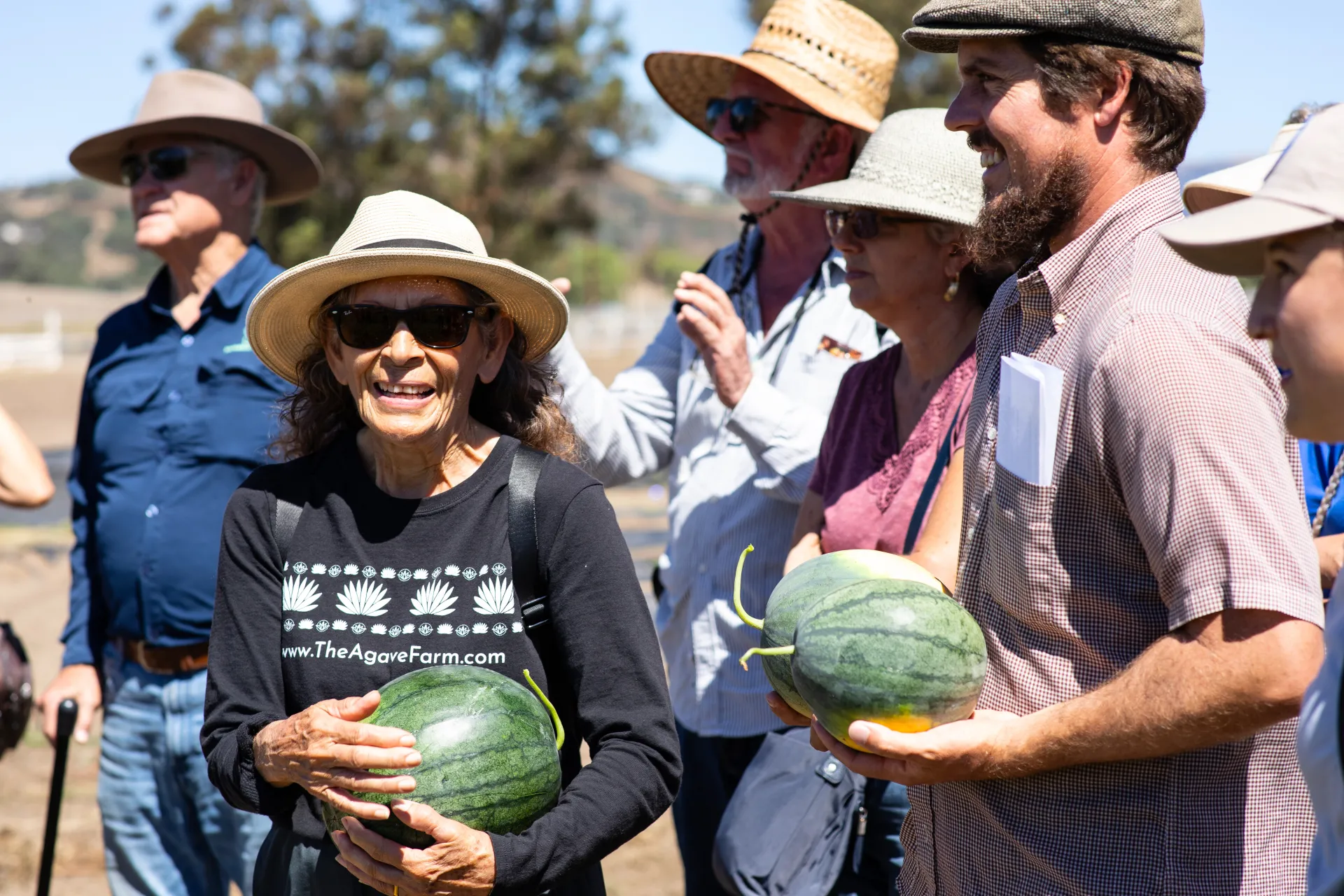
Free farm tours and local expertise helps ground organic farmers in the San Diego region
This fall, grower Rufus Jimenez was preparing to lead a tour of Golden Eagle Farm, a certified organic farm owned by the Mesa Grand Band of Mission Indians, when he had an idea. His watermelon fields were loaded with ripe fruit, and he was running out of storage.
His solution? Let everyone enjoy a hands-on farming experience. After dispensing tips for choosing the best melons, he released the tour group to pick as many as they wanted.
“That was a spur-of-the-moment kind of decision,” Jimenez said. “I was excited to see everybody’s faces at the watermelon patch. It was a great day.”
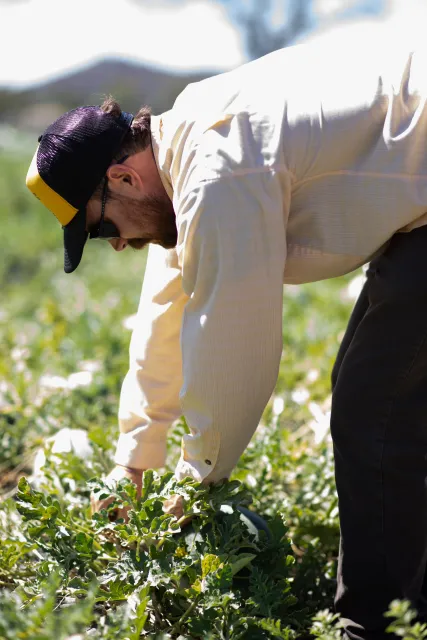
That tour of Golden Eagle was one of several farm visits that kicked off the first day of the 2025 San Diego Region Organic Agriculture Conference. Held Sept. 25-26, the gathering was organized by the University of California Organic Agriculture Institute, a part of UC Agriculture and Natural Resources.
Over 100 attendees, including more than 50 organic farmers, turned out for tours, panel discussions and one-on-one consultations – adding up to the biggest event in the institute’s five-year history. This gathering demonstrated the breadth of experience represented in the organic agriculture industry and the individualized support available for growers to achieve their goals. After this first successful conference at this scale, more regional events are expected in the future.
Lexie Wilson, extension and outreach coordinator with the institute, organized the San Diego conference, along with several colleagues and local partners. According to Wilson, the planning team incorporated Golden Eagle Farm into the agenda with the intention of highlighting “the Indigenous knowledge that has stewarded this particular region for tens of thousands of years.”
Hosting the conference in San Diego was an easy choice – the county currently has the highest number of certified organic farms in California.
In attendance were dozens of experts who support local farms with the latest science in organic cultivation and resource efficiency. Speakers included people from the University of California Cooperative Extension, Resource Conservation District of Greater San Diego County, Community Alliance with Family Farmers, U.S. Department of Agriculture Natural Resources Conservation Service, the County of San Diego and California Department of Food and Agriculture Farm to School Program.

Representatives from other UC ANR entities, the Climate Smart Agriculture program and Small Farms Network, also introduced themselves to growers.
Keeping all of those agricultural advisors straight can be confusing, even for the farmers they serve, Wilson admits. To address that, the planning team hosted Q&As with members of each organization on stage at the same time. That helped the audience differentiate between nonprofits, government advisors, regulators and university scientists. Following introductions, there were opportunities for more casual networking and valuable face time.
“We were able to gather these experts together in one room, and that might not happen as often as we would like,” Wilson said. “A farmer could speak to all of those representatives together and understand the full suite of support that is possible.”
In addition to those panels, farmers could meet individually with experts during “Organic Office Hours,” an opportunity to learn about the organic certification process and discuss specific complexities of growing food without synthetic fertilizers and pesticides.
Funding for the event was provided by the California Department of Food and Agriculture Office of Agricultural Resilience and Sustainability, as well as the State Organic Program, which manages organic enforcement, state registration of organic farms, and education and outreach related to organic agriculture.
“Having so much knowledge, experience and support gathered in one place was incredibly inspiring and reinforced the sense of community within organic agriculture,” said Mayze Fowler-Riggs, CDFA State Organic Program special investigator.
Kevi Mace, senior environmental scientist from the CDFA Office of Agricultural Resilience & Sustainability, also commented on the engagement facilitated by the conference.
“The attendees were having lively and earnest discussions with each other and the presenters,” Mace said. “The presenters clearly take their roles seriously and provide an amazing array of technical assistance. Getting everyone in the same place at the same time generated many conversations.”

Reaping the benefits of farmer-to-farmer mentorship
Farms all across San Diego County opened their gates for the conference, including J.R. Organics in Escondido, Nopalito Farm in Valley Center and Golden Eagle Farm in Ramona.
What made Golden Eagle a noteworthy stop, besides the impromptu watermelon u-pick, was hearing about the tribe’s success in securing resources and identifying mentors to grow their operation. Showcasing opportunities available to farmers was a focus of the conference.
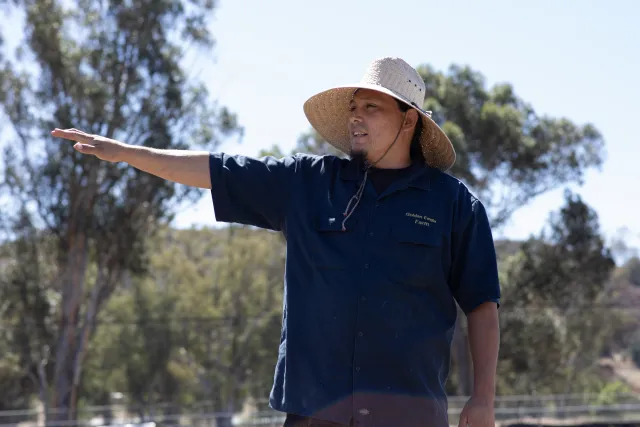
In Golden Eagle’s case, farm supervisor Jimenez has been mentored by longtime grower Scott Murray for nearly five years. That partnership is officially recognized and funded by the USDA Transition to Organic Partnership Program (TOPP) Mentorship Program for early-career growers, thanks to an introduction to the program by Wilson of the UC Organic Agriculture Institute.
The partnership between Murray and Jimenez has been productive. Together, the pair have turned a run-down former horse ranch into several successful harvests of corn, cucumber, chiles, tomatoes and collard greens. Witnessing conference attendees pick watermelons was a payoff for both mentor and mentee.
“Turning a group of people loose in a watermelon field has got to be the funniest thing to watch in the world,” Murray said. He hopes the tour participants will remember that experience and share the word about the Native-operated farm and the resources available to new growers.
“Being a success in the agriculture business is getting known for what you do,” Murray said.
Since the pair were first connected, Murray is proud to have watched Jimenez transform from humble backyard gardener to professional grower. The farm is now providing economic value to the Mesa Grande tribe, a major win as they fight for greater Native food sovereignty.
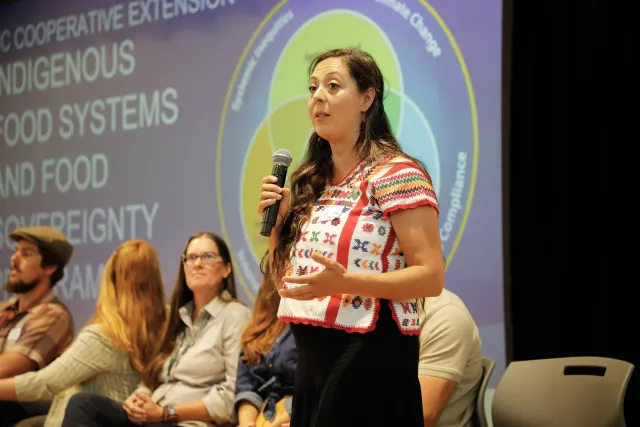
Marisela Chávez, Indigenous food systems and food sovereignty advisor with UC ANR, explained the concept of Native food sovereignty during a panel discussion at the conference.
“The heart of it is about building just food systems centered on self-determination and the ecologically sound production of culturally-relevant foods,” Chávez said. “It can range from working on nutrition, community wellness initiatives, youth programming, land stewardship, native plant restoration or cultural revitalization of Native foodways.”
For Jimenez of the Mesa Grande tribe, food sovereignty is about being self-reliant.
“So if anything happens, the community has their own security, food and materials and medicine,” Jimenez said.
Jimenez left the conference grateful for the opportunity to rub elbows with prominent organic farmers. Those new contacts even got a homegrown gift to remember him by.
“We’re out here trying to make a name,” Jimenez said.
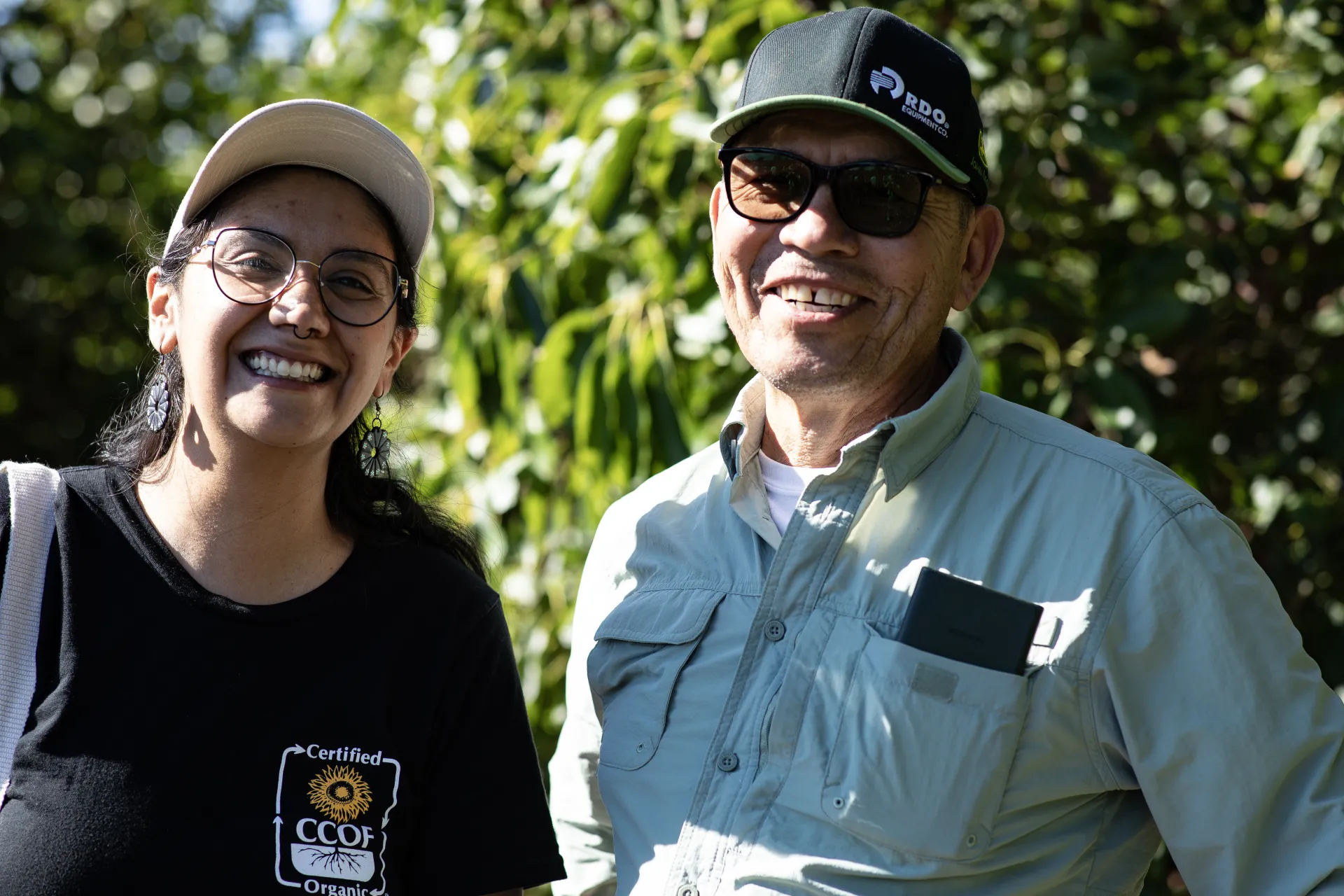
Turning dead vines into organic wine
To complement attendees’ first-hand tours of farm operations, the indoor programming facilitated discussions on the details of running a successful and sustainable organic business. At the end of each panel, there was a good chance of spotting vineyard owner Jorge Reyes’s raised hand in the audience.
“I ask a lot of questions. Some of the questions may not be that smart,” Reyes said. “But I figure, if I have a question, maybe other people might have a question too.”
Like other people in attendance, Reyes is just starting his farming career. In 2020, he retired from the Navy and bought a cabin nestled on a three-acre vineyard, fulfilling a childhood dream. One problem: the place needed work.
“The cabin was a big-time fixer-upper. It had holes in the roof. It was leaking. The vineyard was just overrun by bushes, and most of the vines were dead,” Reyes said.
Since buying the property, Reyes has sought the guidance of agricultural experts, like UC Cooperative Extension advisors, to help turn the dilapidated vineyard into an organic winery. He has even benefited from their feedback during in-person visits to his site.
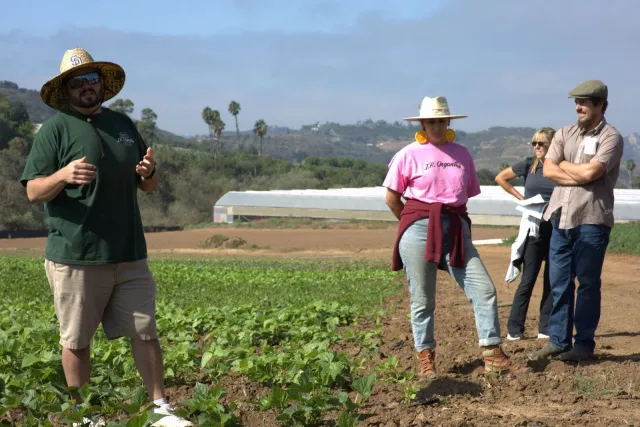
“When you start out, you don’t even know how to do a soil test,” Reyes said. “ You never know what you’re going to learn just talking to different people.”
Like Jimenez, Reyes is also a mentee through the USDA mentorship program and has received additional funding through the nonprofit California Certified Organic Farmers Foundation for organic transition.
By regularly participating in UC-sponsored events, Reyes has become familiar with all the entities that provide free support to organic farmers like him. At the same time, he’s built a network of industry colleagues who share his passion for organic practices and support his endeavors.
Reyes was especially impressed by the conference tour offered by a major grower, J.R. Organics, and considers that operation a role model. As a fellow organic farmer working with a sloped landscape, he found it helpful to have a point of comparison, and left the event re-energized by the mission of organic farming.
“Even just seeing it encourages you, like ‘Hey, you know what, it can be done.’ If you believe in something, you should just do it,’ Reyes said.
